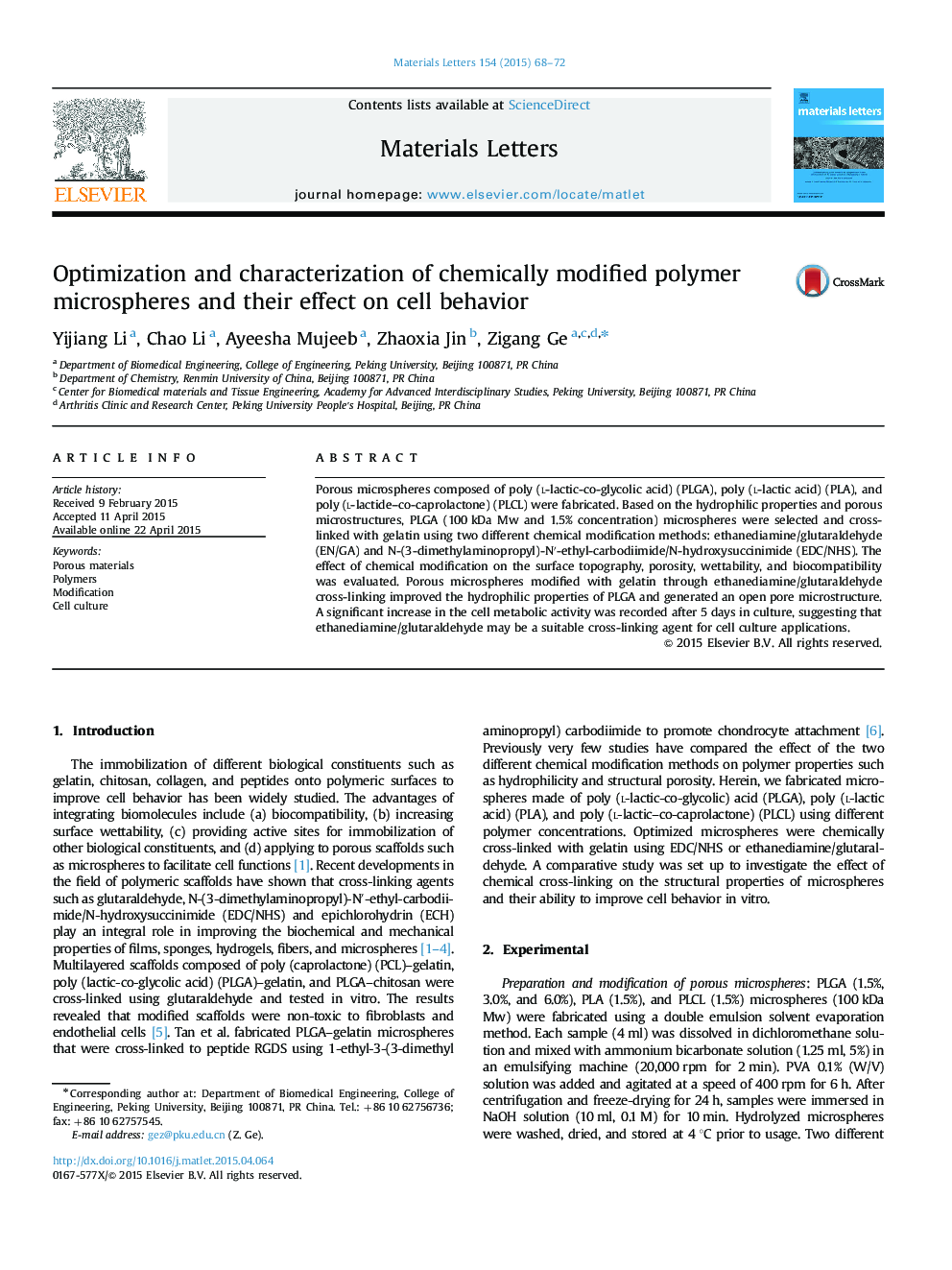| Article ID | Journal | Published Year | Pages | File Type |
|---|---|---|---|---|
| 1642600 | Materials Letters | 2015 | 5 Pages |
●Optimized parameters of fabricating porous microspheres.●Chemical modification influenced the topography of microspheres.●EN/GA cross-linking method enhanced cell attachment and viability.
Porous microspheres composed of poly (l-lactic-co-glycolic acid) (PLGA), poly (l-lactic acid) (PLA), and poly (l-lactide–co-caprolactone) (PLCL) were fabricated. Based on the hydrophilic properties and porous microstructures, PLGA (100 kDa Mw and 1.5% concentration) microspheres were selected and cross-linked with gelatin using two different chemical modification methods: ethanediamine/glutaraldehyde (EN/GA) and N-(3-dimethylaminopropyl)-N′-ethyl-carbodiimide/N-hydroxysuccinimide (EDC/NHS). The effect of chemical modification on the surface topography, porosity, wettability, and biocompatibility was evaluated. Porous microspheres modified with gelatin through ethanediamine/glutaraldehyde cross-linking improved the hydrophilic properties of PLGA and generated an open pore microstructure. A significant increase in the cell metabolic activity was recorded after 5 days in culture, suggesting that ethanediamine/glutaraldehyde may be a suitable cross-linking agent for cell culture applications.
